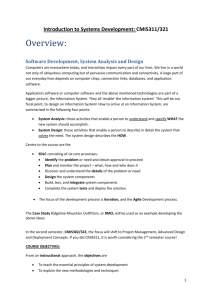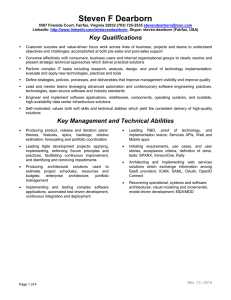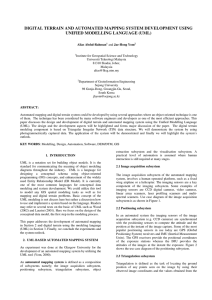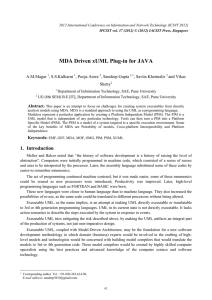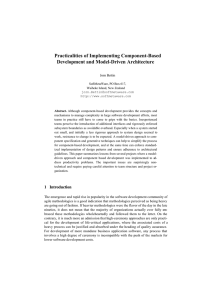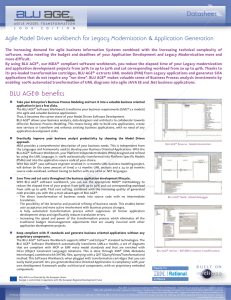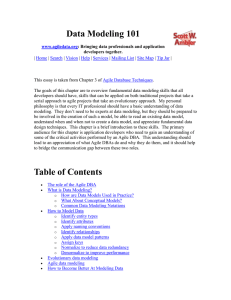Agile Test-based Modeling
advertisement
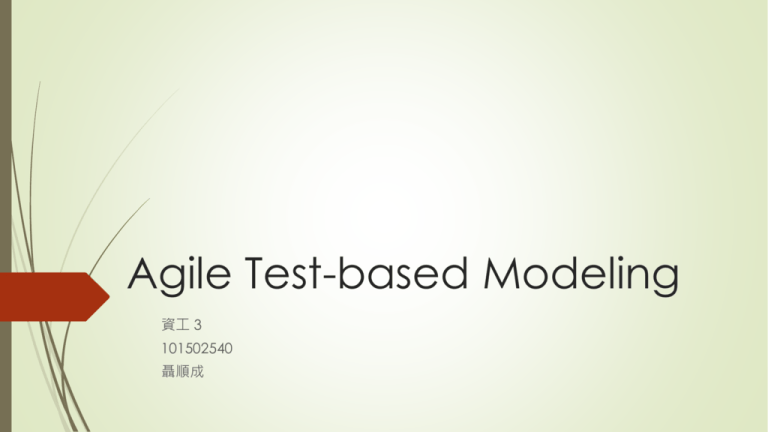
Agile Test-based Modeling 資工 3 101502540 聶順成 Outline Introduction : Modeling meets Programming Agile Modeling: Using Models in Agile Projects Model-based Testing Model Evolution using Automated Tests Introduction : Modeling meets Programming The UML has become the most popular modeling language for software intensive systems Is it critical for a modeling language to be also used as programming language? High level的設計 會太過在意細節,所以未來必須會搭配一些not-executable language 補充 Is the UML expressive enough to describe systems completely or will it be accompanied by conventional languages? 必然會搭配其他語言 What are the implications of an executable UML on the development process? Indeed, the UML is in its current form not very convenient for programming. However, if tooling becomes more efficient and the UML is enriched with appropriate programming concepts, this might change. Introduction : Modeling meets Programming In practice, these models are increasingly often used for generation of code respectively code frames that are filled in manually. Mapping of UML-models to code and test code Agile Modeling: Using Models in Agile Projects XP characteristics XP early focuses on the primary goal, the running production code At any stage of development, automated tests are used to ensure quality of the result . Furthermore, the automation allows us as well as new developers and the paying customer to repeat tests continuously. Refactoring of code is used to improve the code structure and tests ensure the defect rate introduced through refactoring is rather small if existent at all. using an executable version of UML to develop become even more efficient the developer can focus on requirements only, completely disregarding the technological platform. These models can more easily be written, read and understood than code Model-based Testing Code or at least code frames can be generated from a design model. Test cases can be derived from an analysis or design model that is not used/usable for constructive generation of production code. For example behavioral models, such as statecharts, can be used to derive test cases that cover states, transitions or even paths. The modeling technique itself can be used to describe a test case or at least a part thereof. We are going to introduce the development of models that describe tests Structure of a test modeled A typical test consists of a description of the test data, the test driver and an oracle characterizing the desired test result the test data :object diagram (OD). It shows the objects necessary to run The test driver : a simple method call or a sequence diagram (SD). SD : the triggering method calls can be described and check object states during the test run Model Evolution using Automated Tests Move up one method implementation and have it overridden in the other class. Just add the method as abstract signature in the superclass Adapt the method implementations in such a way that common parts can be moved upward. Model Evolution using Automated Tests moving an attribute upward as shown induces object diagrams with Guest-objects to be adapted accordingly by providing a concrete value for that attribute. In this case it may even be of interest to clone tests in order to allow for different values to be tested





